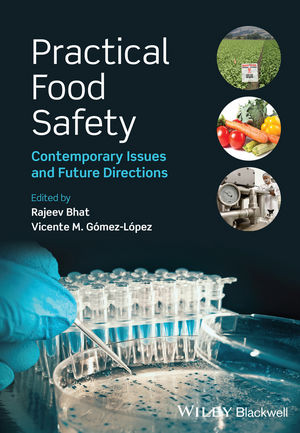The Future of Labeling for Genetically Engineered Foods
California’s Proposition 37 is up for vote this November 6, 2012, and stakeholders throughout America are holding their breaths. If Californians vote in favor of the initiative, Proposition 37 will require raw and processed foods sold in California to disclose the presence of genetically engineered ingredients on their labeling—a requirement that the Federal Government does not currently impose.
No matter which way the vote goes, however, the conversation about genetically engineered foods has just begun and is here to stay. This article summarizes the safety labeling debate, identifies the challenges related to legislation in this area, and proposes best practices going forward.
What Does “Genetically Engineered” Mean?
Different terms such as genetically engineered (GE), genetically modified (GM) and genetically modified organisms (GMO) are used interchangeably to describe foods made from plants or animals that have had their genetic makeup altered using biotechnology and bioengineering techniques (developed in the 1970s) that introduce foreign or synthetic DNA into the relevant plant or animal cells in order to achieve certain traits.
Today, the use of GE foods is widespread throughout the food supply. Reportedly 86% of corn, 93% of soybeans and 95% of sugar beets grown in the U.S. are GE. Other GE crops include squash, papaya, tomatoes and rice. GE ingredients, like these, are also commonly found in processed foods. A GE apple may soon be approved as well.
Are Genetically Engineered Foods Regulated in the U.S.?
While there is no Federal requirement to label GE ingredients, the Federal Government heavily regulates their safety and use. The U.S. Food and Drug Administration (FDA)—which considers the safety, use and labeling of these foods—first announced its policy on the labeling of bioengineered foods in 1992 and then again in 2001. Subsequent submissions to FDA petitioning for changes in the policy have not caused the FDA to alter its position.
A team of FDA experts including consumer safety officers, molecular biologists, chemists, environmental scientists, toxicologists and nutritionists conducted extensive scientific and regulatory analysis of bioengineering and the product it yields. They found no basis for concluding that bioengineered foods differ from other foods in any meaningful way or that, as a class, foods developed by bioengineering techniques present any different or greater safety concern than foods developed by traditional techniques (e.g.,plant breeding). FDA concluded that the presence of GE ingredients in a food does not need to be reflected on a label save in particular circumstances in which the food differs significantly from its non-GE counterpart in composition or nutritional properties.
What Do Other Jurisdictions Do?
Many states other than California (including Connecticut, Hawaii, Illinois, Iowa, Maryland, Michigan, Missouri, New Jersey, Massachusetts, New Mexico, New Hampshire, New York, North Carolina, Oregon, Rhode Island, Tennessee, Vermont, West Virginia and Washington) have also proposed legislation requiring that food labels bear information disclosing GE content. Alaska, with its huge salmon industry, has already passed a biotech seafood labeling law.
Many developed nations, including Australia, Japan and the member countries in the European Union, impose significant restrictions on the production of GMOs and also require GMO labeling.
What Does California’s Proposition 37 Require?
If passed, Proposition 37 would require (1) GE raw materials offered for retail sale in California to bear the statement “genetically engineered” on the label; (2) items offered for retail sale in California and made with or derived from ingredients that are, or may be, GE to bear the statement “contains genetically engineered ingredients” or “may be partially produced with genetic engineering;” and (3) prohibit labeling or advertising such food, or other processed foods, as “natural.”
The law exempts foods that are certified organic; unintentionally produced with GE material; made from animals fed or injected with GE material but not GE themselves; processed with or containing only small amounts of GE ingredients; administered for treatment of medical conditions; sold for immediate consumption such as in a restaurant; or alcoholic beverages.
If Proposition 37 is passed, the requirements will take effect on July 1, 2014.
Why Should Labels Disclose GE Foods?
Those in favor of labeling argue that consumers have a democratic right to information about what is in their foods so that they can make informed decisions—especially when that information relates to foods that some scientists say are linked to health risks.
GE Members of the “Yes to Prop 37” movement argue that GMOs may pose a unique threat to consumers because scientific research has yet to determine the long-term health effects of GE foods. They also claim that animal studies link consumption of GE foods to biological and behavioral changes. Other reported concerns are that GMOs may harbor allergens, introduce new allergens into the food supply and contribute to the spread of antibiotic resistance.
Why Shouldn’t Labels Disclose GE Foods?
Those opposed to labeling argue that the Federal Government has a comprehensive framework that governs the development, safety and labeling of bioengineered foods. Under this framework, FDA has concluded that bioengineered foods do not, as a class, differ in any meaningful way from their non-engineered counterparts.
They argue that consumers will interpret labeling to be a warning that GE ingredients are not safe. They note that this misconception will stifle technological advancement that allows foods to achieve certain desirable traits such as pesticide resistance, drought tolerance and improved nutrient content.
They also point out that many well-respected public health agencies (including the American Medical Association, the National Academy of Sciences, the Academy of Nutrition and Dietetics, and the World Health Organization) have found no scientific justification for labeling of GE foods.
Whether Proposition 37 Passes or Not, Changes are Imminent
No matter what happens in November with Proposition 37, legal and regulatory changes related to the manufacturing, use, labeling and approval of GE foods are a near certainty.
If Proposition 37 passes, its requirements are likely to be followed by other states (indeed, many states have already proposed similar measures). As has been the case with so many food controversies, as California goes, so goes the nation. Even if it does not pass, the labeling movement will go forward. Consumers increasingly demand to know what is in the foods they eat, and when it comes to GMO labeling, this simple desire may provide enough momentum to compel action by government, the food industry and the public health community. These actions will likely include promoting scientific research, developing standards, passing labeling laws or investing in consumer education.
The Challenges That Lie Ahead
There will be many challenges created by the use of GMOs regardless of what happens in California in November:
• Shakedown Lawsuits: Numerous lawsuits across the country have already been filed accusing food companies of fraudulently touting products as “all natural” when they contain GE ingredients. Proposition 37-type legislation will result in even more lawsuits. Class certification in such cases also often triggers “blackmail settlements.”
• Lawsuits Will Stretch Back Through the Food Supply Chain: Resulting lawsuits will seek information from all members of the supply chain and implicate everyone from farmers to suppliers to manufacturers to marketers. They all may be burdened by additional and expensive product testing, paperwork and recordkeeping because of plaintiffs’ scorched earth approach to the litigation.
• Misleading “Warnings:” There is a risk that consumers may interpret “genetically engineered” on labels as a warning that the food at issue is somehow less safe or less healthful because of its GE components. That may be a false alarm since FDA’s current position is that there is not any recognized difference health wise between GE products and their non-genetically engineered counterparts. Food companies afraid of not being able to substantiate less than 1% thresholds for GE content might have no other choice than to opt for a label statement “may be partially produced with genetic engineering” to avoid the risk of liability. Such vague and ubiquitous labels will not provide consumers with any meaningful information on which to base their food choices.
• Substantiating GE Label Statements: Setting standards for GE claims such as “partially produced with genetic engineering,” “genetically engineered,” “unintentionally produced with genetically engineered material,” “GMO-Free” and “containing only small amounts of genetically engineered ingredients” will be difficult. How will these qualifiers be quantified or assigned meaning when there is not even a national standard or consensus as to a definition of GE? There are already problematic inconsistencies. For example, even though “GMO” claims (e.g.,“Non-GMO”) currently appear on food labels, FDA does not even think the term “GMO” should be used because it says that most if not all cultivated food crops have been “genetically modified” in some way. Companies will also need to decide how to verify GE content. Will they conduct their own testing or instead rely on affidavits from downstream suppliers and run the risk that these suppliers will be less than honest in any verification?
• Logistics for Food Companies: Laws like Proposition 37 interfere with manufacturers’ ability to market their products on a uniform and nationwide basis by requiring labeling that is not required by FDA. What will the result be? Will some manufacturers and suppliers just label in California, decide to label nationally, or move away? Will it be worth it for them to incur the additional costs needed to prepare special labels and segregate foods intended for California? Or will they have to source much more expensive organic or non-GE products to avoid the labeling requirement?
• A Fifty State-By-State Labeling Scheme: If Proposition 37 passes, it will reinforce the notion that states can act as food labeling police. As states continue to introduce legislation about GE labeling, the result may be a labeling system with inconsistent requirements. Will FDA allow a state to impose mandatory GE food labeling regulations in light of its position that the scientific evidence does not show that GE foods are less safe? Will some interested party invoke federal preemption?
Best Practices Going Forward
While the future is still uncertain, there are certain standard operating procedures and guidelines, policies, and procedures that affected parties should be thinking about sooner rather than later:
• Engage FDA: FDA’s unique expertise and resources should be sought out and relied upon to help create uniformity and consistency in labeling. Additionally, GE producers should continue to collaborate with FDA about their GE-based foods by taking advantage of FDA’s consultation process for bioengineered foods. This process addresses whether a particular bioengineered food is different from its counterparts on the market, whether the food is safe and how it should be labeled. Developers submit detailed applications to FDA including an analysis, at the molecular level of the modification involved and an analysis on safety.
• Demand Substantiation: With their products, reputations and money on the line, it is imperative that companies demand substantiation from all relevant suppliers in the food supply chain for GM content or lack thereof. Ideally, this substantiation would be in the form of valid and reliable scientific tests and analyses. If this is not possible, then companies should demand verifications/affidavits/certifications of the presence, amount of, source of or absence of GE materials.
• Verification and Recordkeeping Protocols: Labeling laws will require affected parties at all levels of the supply chain to either seek out or provide verifications related to levels of GE materials in their foods. Farmers, distributors, manufacturers, packagers and marketers will all demand certifications from downstream suppliers. These parties will also be held accountable for properly maintaining verification records. Companies will need to have Standard Operating Procedures in place to ensure that proper channels are followed.
• Consumer Education Campaigns: With so many major crops reportedly coming from GE seeds, disclosure could potentially be required on just about every food. Preventing public misperception is therefore a necessity. However, educating consumers about the use of genetics in foods through GE claims made on a food label is likely impossible. Instead, stakeholders must work together on education campaigns about the use of biotechnology in GE foods, the state of the science and the safety of consumption of GE foods. The most effective education will involve collaboration among all affected parties to provide consumers with a level of understanding sufficient to address fears they may have.
Michelle Schaefer, of the DLA Piper law firm based in Washington, DC, represents companies in litigation and counsels companies on regulatory matters. She focuses her practice in counseling food, prescription drug, and medical device manufacturers on regulatory issues. She tracks and evaluates emerging trends and regulatory requirements for foods, drugs and medical devices and develops strategies for compliance with all aspects of regulations, including labeling, advertising, promotional materials and product claims.
Looking for a reprint of this article?
From high-res PDFs to custom plaques, order your copy today!







